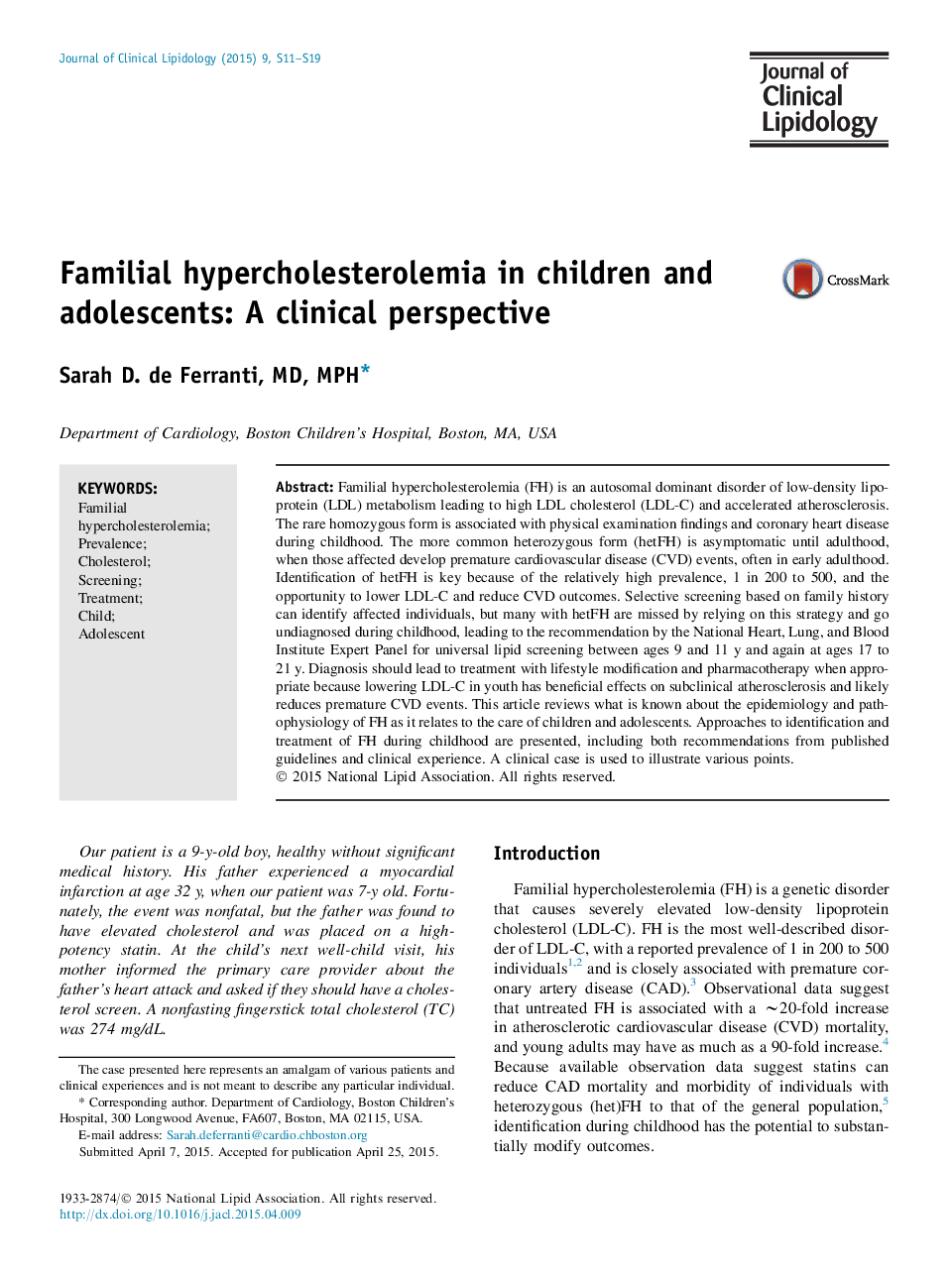| Article ID | Journal | Published Year | Pages | File Type |
|---|---|---|---|---|
| 2965809 | Journal of Clinical Lipidology | 2015 | 9 Pages |
Familial hypercholesterolemia (FH) is an autosomal dominant disorder of low-density lipoprotein (LDL) metabolism leading to high LDL cholesterol (LDL-C) and accelerated atherosclerosis. The rare homozygous form is associated with physical examination findings and coronary heart disease during childhood. The more common heterozygous form (hetFH) is asymptomatic until adulthood, when those affected develop premature cardiovascular disease (CVD) events, often in early adulthood. Identification of hetFH is key because of the relatively high prevalence, 1 in 200 to 500, and the opportunity to lower LDL-C and reduce CVD outcomes. Selective screening based on family history can identify affected individuals, but many with hetFH are missed by relying on this strategy and go undiagnosed during childhood, leading to the recommendation by the National Heart, Lung, and Blood Institute Expert Panel for universal lipid screening between ages 9 and 11 y and again at ages 17 to 21 y. Diagnosis should lead to treatment with lifestyle modification and pharmacotherapy when appropriate because lowering LDL-C in youth has beneficial effects on subclinical atherosclerosis and likely reduces premature CVD events. This article reviews what is known about the epidemiology and pathophysiology of FH as it relates to the care of children and adolescents. Approaches to identification and treatment of FH during childhood are presented, including both recommendations from published guidelines and clinical experience. A clinical case is used to illustrate various points.
